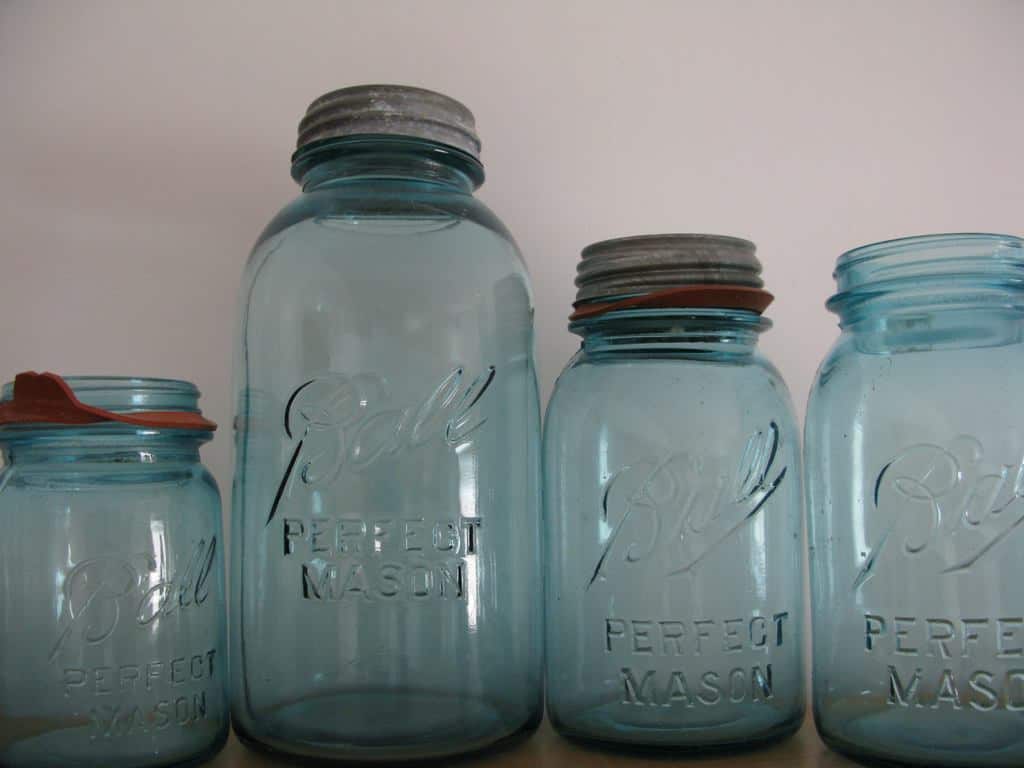
Image courtesy: flickr
How to Date Ball Mason Jars
Mason jars are enjoying another comeback in recent years, and people are frantic about it.
They have been re-appearing in flea markets, groceries, home shops, you name it. People have been rummaging in their attics and cupboards hoping to find these items not only to join the fad.
It’s also because antique glass jars have been fetching some good value these days. Very rare mason jars have recently fetched up to a thousand dollars, while antique ones can be priced for up to a couple of hundreds online.
The interesting part here is, the older they are, the rarer they get, the more expensive they can be.
And that’s why determining the date of mason jars are of utmost importance. Just like wine, mason jars that have been produced at a certain time period may cost more. But even before we talk about that, what are mason jars really?
What are Mason Jars?
Mason jars date back to the 1800s when John Landis Mason thought of an innovative way to seal jars.
"The logo will tell you how to date Ball mason jars."
Before his patented invention, glass jars were sealed with a thin lid glued together by wax. This proved to be a difficult task especially when resealing the jars because lids cannot be reused.
Landis introduced a lid that can be tightened by a screw ring. He was unable to takeoff from this though until the Ball Brothers caught up with this idea in 1884 in Muncie, Indiana.
From then on, the Ball brand of mason jars have taken over the market by storm making it a common household item.
The popularity of mason jars continued to soar during World War II, when the US government asked its citizens to grow and preserve their own food.
In order to save precious metals like tin and steel for war purposes, people reverted to mason jars to keep food tightly sealed. Even after the war, mason jars were still being used but this time, for canning and preserving fruits, which became a big fad in the 1950s.
The popularity of mason jars started to decline after that, with the introduction of supermarkets and instant food.
Today however, mason jars are quickly regaining its appeal for a couple of reasons.
With a shifting culture towards recycling and reusing, people have opted to look for more environmentally-friendly materials like glass jars to store food and other items.
Another factor is its vintage appeal and storage practicality. Unlike plastic and tin cans, the bleached glass of mason jars allows you to see what’s inside. The third reason is that they can still store and preserve food pretty well.
Dating a Ball Mason Jar
Ball mason jars are still being produced up to this day and there are no signs of stopping soon. But if you’re one of the lucky ones to have found an old Ball mason jar, or if you are an avid collector of such items, then dating these things is very important.
The logo will tell you how to date Ball mason jars. Since 1885, Ball has created eight logo variations associated to certain time periods. Though you will not be able to tell the exact year it was made, you will be able to get a good approximation.
Check the chart below to find out more:
Logo design | Time Period |
Overlapping letters BBMCO | 1885-1886 |
Capital letters BALL | 1895-1896 |
Script Ball with underscore detached | 1895-1896 |
Script Ball with underscore attached by loop and ‘a’ has an extended line on the left side | 1900-1910 |
Script Ball with underscore attached without loop and ‘a’ has an extended line on the left side | 1910-1923 |
Script Ball without underscore and ‘a’ is plainly written | 1923-1933 |
Script Ball with underscore and ‘a’ is plainly written | 1933-1962 |
Script Ball with underscore and ‘B’ loop is closed | 1960-present |
Aside from the logo, another way for how to date Ball mason jars is the glass color.
If a glass is colored purple, it means that manganese dioxide was used to make glass look clear and transparent. Exposure to sunlight though caused the glass to turn purple.
During World War II, glassmakers shifted to selenium as supply for manganese dioxide was limited. Thus purple jars can be considered to have been made before World War II.
Whether you’re in for the fad or you just simply adore these nicely crafted glass items, mason jars are truly worth owning. They have a rich cultural history and have withstood the test of time. They’re very practical to use, friendly to the environment, and valuable (especially the rare ones!)
Resources
http://www.huffingtonpost.com/entry/all-about-mason-jars_us_55fc11dbe4b00310edf6a2a7
http://www.countryliving.com/shopping/antiques/a36246/canning-jars-collectors-guide/
http://antiques.lovetoknow.com/value-old-canning-jars
http://www.minnetrista.net/blog/2013/06/27/ball-family-history/how-to-date-a-ball-jar/
